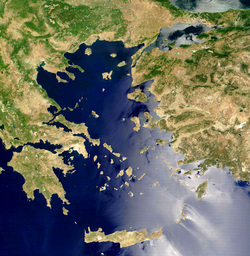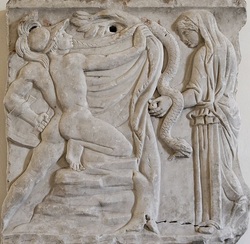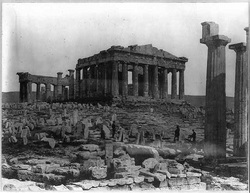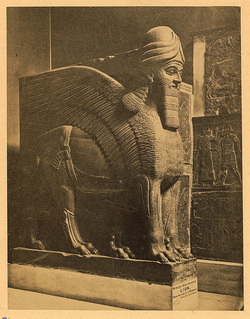The Geography of the Argonauts' Journey

The Argonauts voyage around and beyond the ancient Greek world was the subject of geographic speculation as far back as records exist. Poets and historians debated the exact route, and no two agreed fully. Herodorus believed the Argonauts simply traveled along the coast of Asia Minor and returned the same way. Apollonius had them travel through the Danube and around Italy, while the Orphic Argonautica sent them as far afield as Ireland. This slideshow presents images of some of the locations associated with the many routes of the Argonauts.
VIEW SLIDESHOW
The Argonauts in Ancient Art

The story of the Argonauts and Jason's quest for the Golden Fleece is among the oldest in all Greek myth, attested from the time of Homer and likely dating back to the late Mycenaean period. When Archaic Greek art began to depict scenes from mythology, the episodes in Jason's journey were among those immortalized on pottery and in sculpture. This selection of Greek and Roman pieces depicts scenes from the stories of Jason and Medea and the Argonauts' adventures.
VIEW SLIDESHOW
The Argonauts in Medieval and Modern Art

The story of the Argonauts' adventure continued to fascinate medieval and modern artists. However, due to the limited information about the myth available in the Middle Ages, medieval and early modern art tended to focus on the loves of Jason, Hypsipyle and Medea, rather than the exploits of the hero. Later art has tended to follow suit, emphasizing the emotionally fraught relationship between Jason and Medea more frequently than the heroic exploits of the Argonaut adventure that were more prevalent in ancient art. The art shown here is a sample of the large amount of medieval, early modern, and modern interpretations of the Jason story.
VIEW SLIDESHOW
Historic Images of Ancient Greece

Ancient Greece was the birthplace of democracy, the fountainhead of philosophy, and the home of a beloved mythology of gods and heroes. From its origins in the Bronze Age civilization of Mycenaean Greece down to the Roman conquest, ancient Greece tantalizes us with its architecture, its myths, and its accomplishments. In these rare photographs from the Library of Congress, we see the ruins of ancient Greece as they were first uncovered by archaeologists in the nineteenth and early twentieth centuries, a place where myth and history meet.
VIEW SLIDESHOW
Historic Images of the Ancient Near East

The Near East has long been a source of fascination because of its ancient cultures and its connection to the foundations of Western civilization, from the origins of civilization at Sumer to its influence on the development of the Jewish and Christian faiths and on ancient Greece and Rome. As discussed in my book, the Near East is the source of many key images and motifs in the Jason story. These rare photos from the Library of Congress show the Near East's archaeological sites as they were when first uncovered, before modern excavation and restoration efforts.
VIEW SLIDESHOW


